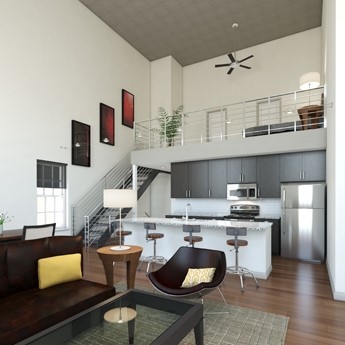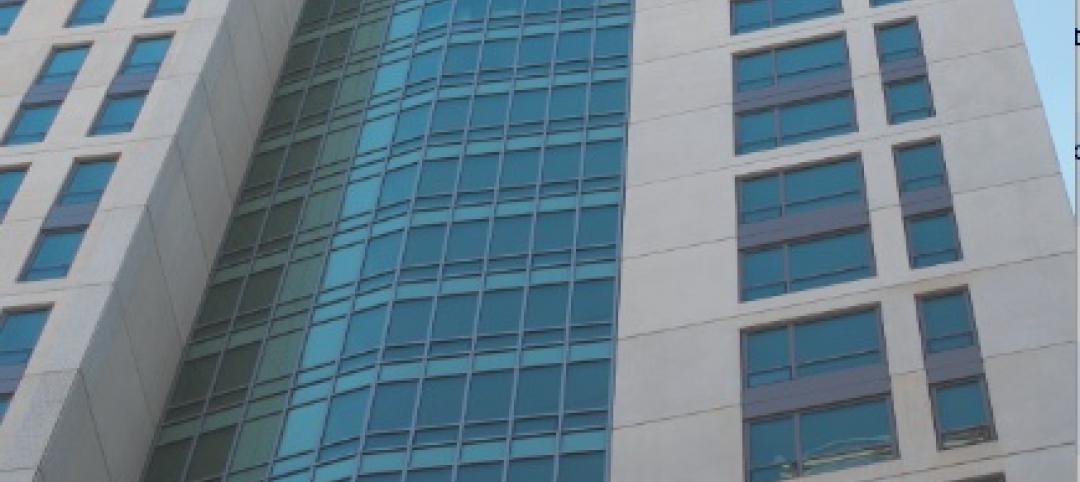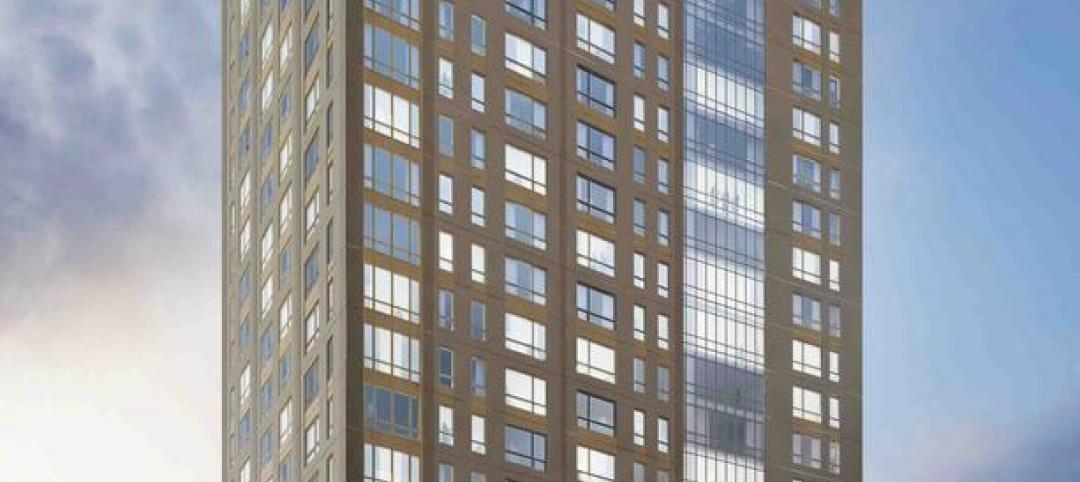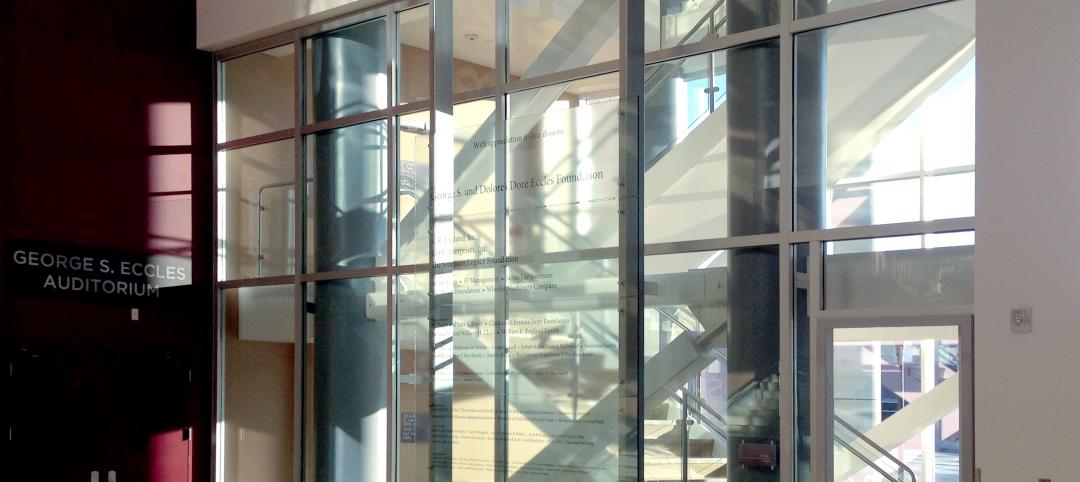Adaptive reuse, or the process of taking an old building or structure and repurposing it for something other than what it was originally designed for, has gained a lot traction with developers and architects alike – and for many good reasons. For one thing, it is more economical and sustainable to work with an existing structure than to demolish an old building, clean up the site, and rebuild with entirely new materials. It also helps preserve historical structures that add character to the community, as well as reduce urban sprawl. For the multifamily sector, we’ve seen adaptive reuse applied to old schools, government buildings, warehouses, etc. because these structures are usually centrally located in many downtown areas. In an era where millennials and baby boomers alike are choosing to “live, work and play” in urban settings, a good amount will pay a premium to live in a building that is close to everything and boasts of history and character.
This was the case for The Barrett Apartments in Columbus, OH. The developers chose a centrally located, abandoned historic landmark that was built in 1898 as South High School, and later on renamed as The Barrett School in honor of the school’s first principal. Part of the allure of these reimagined luxury apartments was the fact that it was once a school – so the architects preserved not just the historic structure, but the wood floors of the basketball court, 20 ft. hallways, chalkboards, and more. Contemporary design elements such as glazing that brings in abundant natural light were added as well, and the designers made sure that these additions complimented the building’s original Greek and Roman Design.
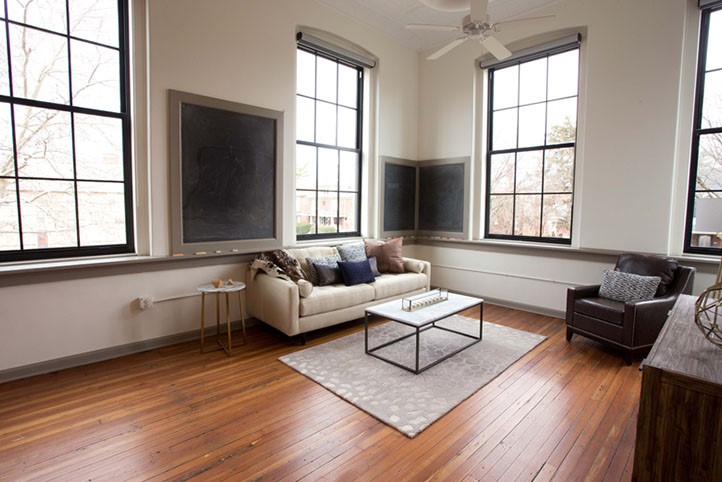 The chalkboards from the classrooms were preserved and became part of the living units. (photo from CASTO).
The chalkboards from the classrooms were preserved and became part of the living units. (photo from CASTO).
Some of the key areas where the architects wanted to incorporate glazing were in the 1-hour exit enclosures. In order to meet the code requirements, the architects specified fire resistive glazing tested to ASTM E-119/UL 263.
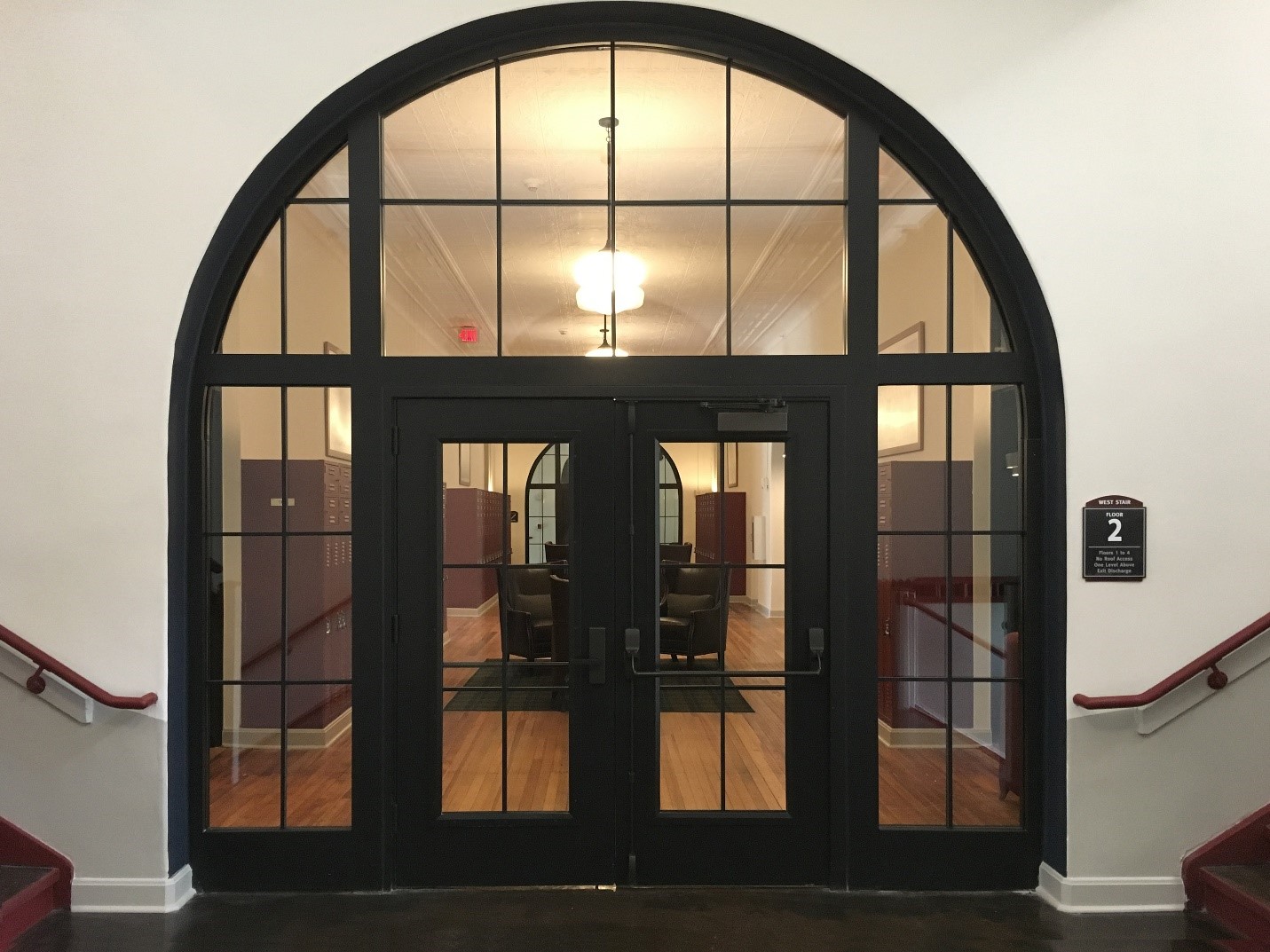 Pattern-cut SuperLite II-XL 60 and stretch-formed custom GPX Architectural Series Framing for the 1-hour fire resistive wall and SuperLite II-XL 60 in GPX Builders Series Temperature Rise for the full-lite doors.
Pattern-cut SuperLite II-XL 60 and stretch-formed custom GPX Architectural Series Framing for the 1-hour fire resistive wall and SuperLite II-XL 60 in GPX Builders Series Temperature Rise for the full-lite doors.
The fire resistive glass and framing used in the 1-hour exit enclosures had to fit the arched tops, which were an integral part of the building’s design. SAFTI FIRST supplied pattern-cut SuperLite II-XL 60 for the sidelites and transoms. The custom GPX Architectural Series Framing were stretch-formed using SAFTI FIRST’s own machinery to ensure the frames matched the pattern cut of the glass. SuperLite II-XL 60 was also used in the door vision panels in order to exceed 100 sq. inches. Surface-applied muntins were added in the field to compliment the look of the windows and other non-rated storefronts in the building.
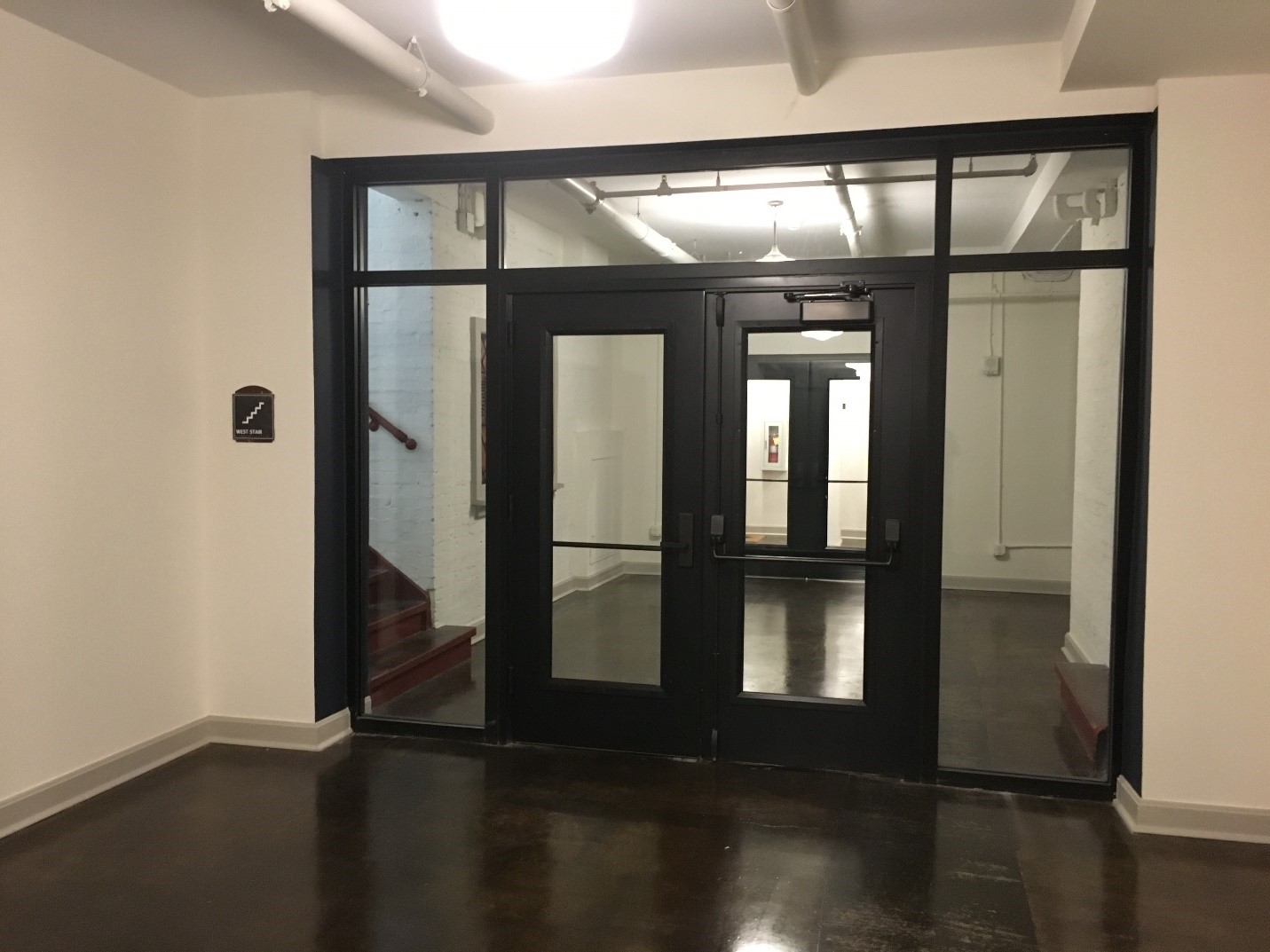 SuperLite II-XL 60 in GPX Architectural Series Framing for the walls and SuperLite II-XL 60 GPX Builders Series Temperature Rise for the full-lite doors.
SuperLite II-XL 60 in GPX Architectural Series Framing for the walls and SuperLite II-XL 60 GPX Builders Series Temperature Rise for the full-lite doors.
For the other 1-hour exit enclosures in the building that did not have arched tops, SuperLite II-XL 60 in GPX Architectural Series framing were used in the transoms and sidelites to create a 1-hour fire resistive assembly. Again, SuperLite II-XL 60 was also used in the door vision panels in order to exceed 100 sq. inches in the door vision panel.
It’s important to note that in the IBC, 1-hour exit enclosure applications do not allow ceramics to be used in sidelites and transoms because it does not meet the ASTM E-119/UL 263 fire resistive wall requirement. If ceramics were to be used in the door vision panels, it would be limited to 100 sq. inches because it cannot limit the passage of radiant heat. In order exceed the door vision panel size limitations, fire resistive glazing tested to ASTM E-119/UL 263 must be used.
The result is a beautiful, classic-yet-updated, code compliant luxury apartment complex where residents are treated to the unique charm and history of their building while enjoying the light, transparency and maximum fire protection from advanced fire resistive glazing.
Related Stories
High-rise Construction | Jul 9, 2013
5 innovations in high-rise building design
KONE's carbon-fiber hoisting technology and the Broad Group's prefab construction process are among the breakthroughs named 2013 Innovation Award winners by the Council on Tall Buildings and Urban Habitat.
| Jun 4, 2013
Notification reinvented: SimplexGrinnell introduces revolutionary family of intelligent notification appliances
Simplex TrueAlert ES uses addressable technology to improve protection, simplify installation and reduce operating costs.
| May 6, 2013
SAFTI FIRST announces 3D Autodesk Revit models for fire rated wall, window, and door systems
SAFTI FIRST, leading USA-manufacturer of fire rated glass and faming systems, is proud to announce that Autodesk Revit models are now available for its fire rated walls, window and door systems via www.safti.com and Autodesk Seek.
| Apr 30, 2013
Tips for designing with fire rated glass - AIA/CES course
Kate Steel of Steel Consulting Services offers tips and advice for choosing the correct code-compliant glazing product for every fire-rated application. This BD+C University class is worth 1.0 AIA LU/HSW.
| Mar 23, 2013
Fire resistive curtain wall helps mixed-use residential building meet property line requirements
The majority of fire rated glazing applications occur inside the building in order to allow occupants to exit the building safely or provide an area of refuge during a fire. But what happens when the threat of fire comes from the outside? This was the case for The Kensington, a mixed-use residential building in Boston.
| Nov 6, 2012
Uponor files patent infringement suit against Sioux Chief Manufacturing
Uponor is seeking damages and an injunction to prevent Sioux Chief from selling the PowerPEX F1960 Ring with Stop, which it believes violates Uponor’s patent.
| Oct 30, 2012
Two-hour fire rated curtain wall passes CDC tests
CDC (Curtain Wall Design and Consulting) is an independent firm providing a wide range of building envelope design, engineering, and consulting services to design professionals nationwide.
| Jul 16, 2012
Business school goes for maximum vision, transparency, and safety with fire rated glass
Architects were able to create a 2-hour exit enclosure/stairwell that provided vision and maximum fire safety using fire rated glazing that seamlessly matched the look of other non-rated glazing systems.
| Jun 1, 2012
New BD+C University Course on Insulated Metal Panels available
By completing this course, you earn 1.0 HSW/SD AIA Learning Units.
| May 29, 2012
Reconstruction Awards Entry Information
Download a PDF of the Entry Information at the bottom of this page.


